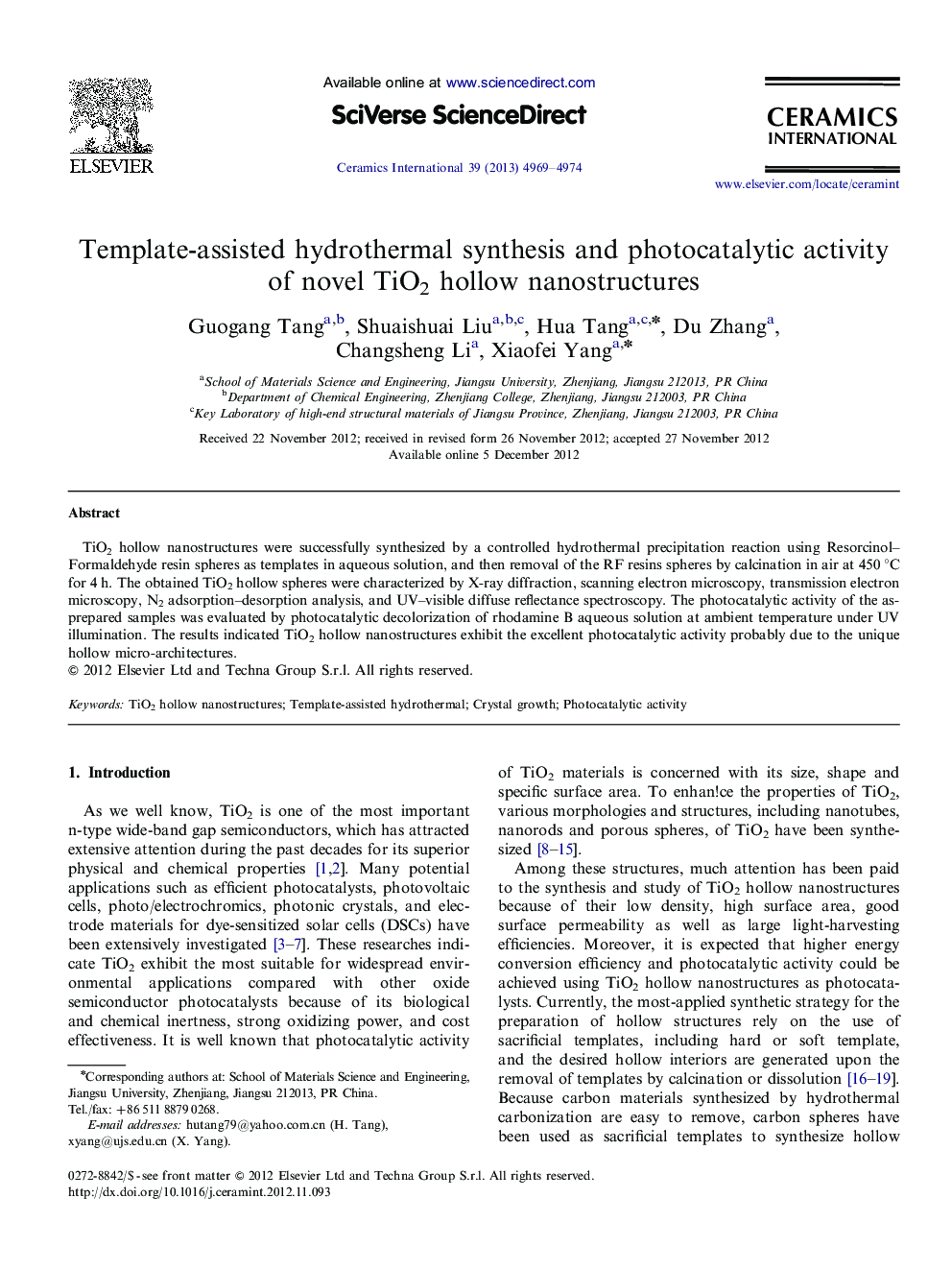| Article ID | Journal | Published Year | Pages | File Type |
|---|---|---|---|---|
| 1463098 | Ceramics International | 2013 | 6 Pages |
TiO2 hollow nanostructures were successfully synthesized by a controlled hydrothermal precipitation reaction using Resorcinol–Formaldehyde resin spheres as templates in aqueous solution, and then removal of the RF resins spheres by calcination in air at 450 °C for 4 h. The obtained TiO2 hollow spheres were characterized by X-ray diffraction, scanning electron microscopy, transmission electron microscopy, N2 adsorption–desorption analysis, and UV–visible diffuse reflectance spectroscopy. The photocatalytic activity of the as-prepared samples was evaluated by photocatalytic decolorization of rhodamine B aqueous solution at ambient temperature under UV illumination. The results indicated TiO2 hollow nanostructures exhibit the excellent photocatalytic activity probably due to the unique hollow micro-architectures.
